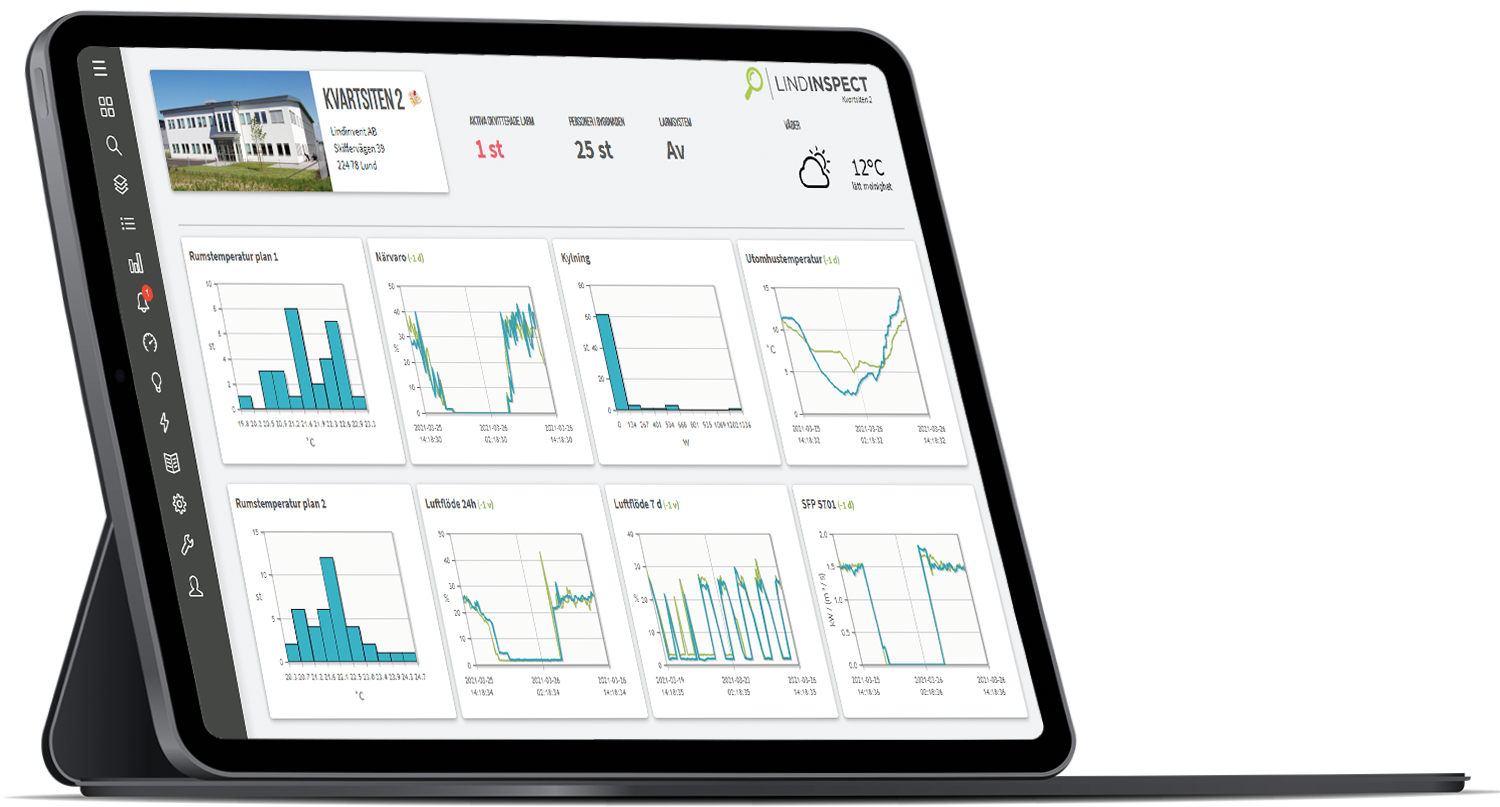SENSORS – A SMART SOLUTION FOR ENERGY EFFICIENCY
Buildings account for approximately 40% of global energy consumption, making sensors a crucial tool for reducing energy use. By measuring temperature, airflow, air quality, and noise levels, we can optimize indoor environments, creating comfortable, productive, and energy-efficient workplaces.
Why Use Sensors?
"To measure is to know." Today’s compact and cost-effective sensors enable property owners to make informed decisions that lower energy consumption, enhance comfort, and reduce environmental impact. Sensors also allow for workspace utilization analysis, optimized ventilation, and the assurance of a healthy and safe indoor environment. For example, during the COVID-19 pandemic, monitoring supply airflows helped implement measures to reduce virus transmission.
The Invisible Eye of Your Building
Continuous monitoring of various indoor parameters helps property owners identify underutilized spaces, optimize room functions, and reduce unnecessary energy consumption. This not only lowers operational costs but also enhances the tenant experience, leading to increased satisfaction and long-term leasing relationships.
Next-Generation Sensors
Our sensors are designed to ensure a productive indoor climate with minimal energy use. Our self-calibrating pressure and airflow sensors, along with CO₂ sensors featuring background calibration, provide high precision and long-term stability. We are now expanding our range with additional sensors, including models for active supply air diffusers. Some of these sensors also meet WELL certification requirements, making them an ideal choice for the sustainable buildings of the future.
GM-I – Built-in Formaldehyde Sensor
The GM-I is an advanced sensor that measures formaldehyde (CHOH) in indoor air—one of the most widely recognized volatile organic compounds (VOCs). Formaldehyde can originate from building materials, furniture, tobacco smoke, and outdoor air. It is also the only VOC with a recommended indoor air quality guideline value.
With the GM-I, you can now continuously monitor formaldehyde levels, ensuring a safe and healthy indoor environment.
GQH-I – Built-in CO₂ & Humidity Sensor
The GQH-I measures carbon dioxide and humidity to optimize indoor climate conditions. By adjusting ventilation airflow based on real-time CO₂ levels, energy consumption can be reduced while maintaining a comfortable environment. CO₂ measurement can also be used to estimate occupancy levels in a space.
Humidity monitoring contributes to a healthier indoor environment by reducing the spread of aerosol particles and minimizing the risk of bacterial growth.
GO-C – External Ceiling-Mounted Occupancy Sensor
The GO-C is a ceiling-mounted occupancy sensor that detects movement through changes in infrared radiation. It is used to extend the detection range, for example, in combination with occupancy sensors in active supply air diffusers, enabling even more precise indoor climate control.
GS-C – External Ceiling-Mounted Sound Level Sensor
The GS-C is a digital sound level sensor designed for ceiling installation, compatible with Lindinvent’s active supply air diffusers and room climate controllers. Sound is a crucial factor in indoor environments, and monitoring noise levels is particularly valuable in settings such as schools, where specific guidelines ensure a healthy and productive acoustic environment.
 LINDINSPECT® – All Information in One Place
LINDINSPECT® – All Information in One Place
All sensors are connected and accessible via our web interface, LINDINSPECT®, where measurement data can be visualized, monitored, and analyzed in real time. The system provides a wide range of parameters for optimal control and energy efficiency, with all adjustments easily made directly in LINDINSPECT®.
For integration with other systems, all measurement data is also available via our API or Modbus TCP through our server.